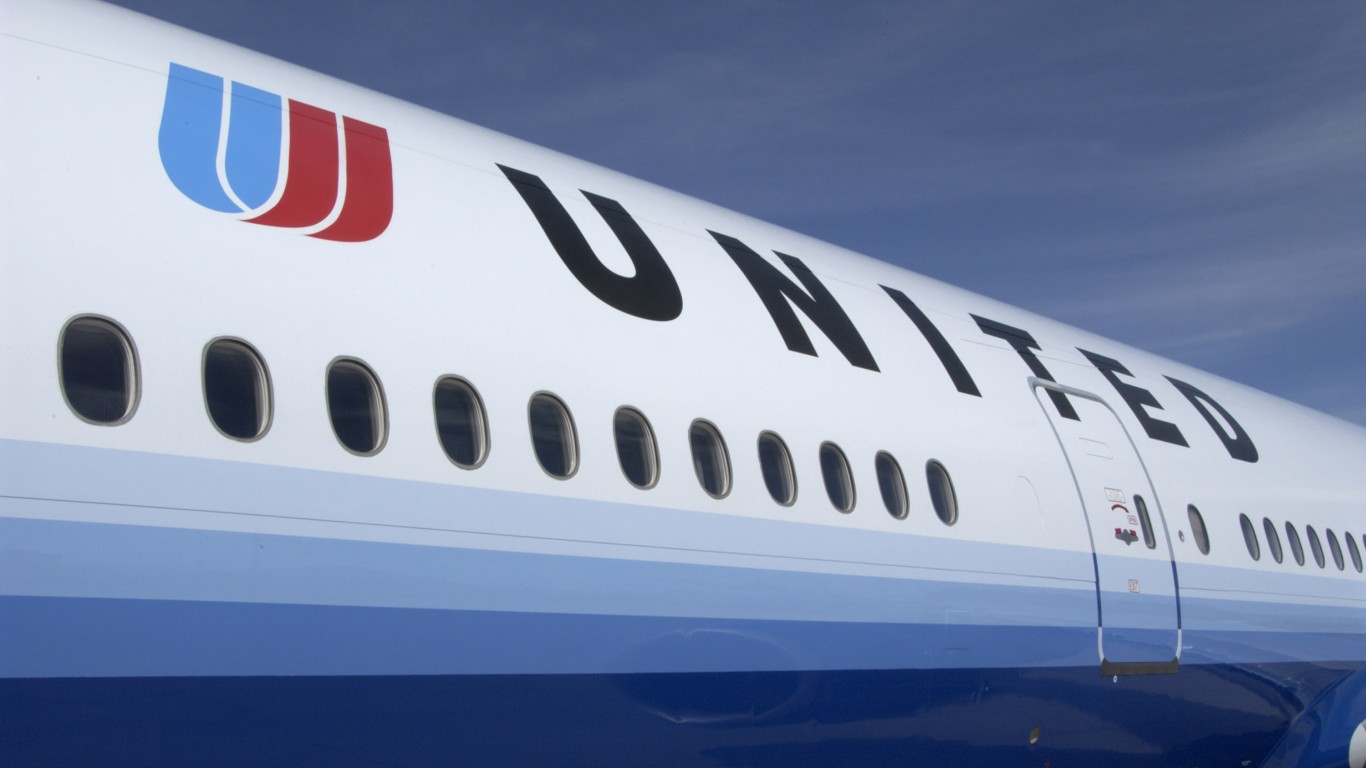
Last Friday, investors got their first look at how the country’s biggest banks fared in the fourth quarter of 2021. Judging by their reactions, Wells Fargo deserved a share price boost and JPMorgan deserved to get punished. Citigroup and BlackRock closed lower on Friday, but they avoided the punishment JPMorgan received.
Following Monday’s Dr. Martin Luther King Jr. holiday, Goldman Sachs and Truist reported results before markets opened Tuesday. Truist beat on both the top and bottom lines, while Goldman missed the consensus earnings estimate.
More financial sector results are coming up this Wednesday and the rest of this week, as well as reports from consumer product, industrial, and transportation firms. Before markets open Wednesday, we will hear results from Bank of America, Morgan Stanley, Procter & Gamble and UnitedHealth. It will be a busy week.
Here are four earnings reports due out after markets close Wednesday.
Alcoa
Aluminum producer and refiner Alcoa Inc. (NYSE: AA) has added more than 150% to its share price over the past 12 months, including a spike of 40% since December 1. Aluminum prices hit a high of around $3,176 per metric ton in mid-October before falling to around $2,520 just three weeks later. Last week, the stock reached a 14-year high. High energy costs are not expected to hurt Alcoa as much as they are aluminum smelters exposed to the spot commodity prices.
Only 12 analysts cover the stock, but nine of those have a Buy or Strong Buy rating on the stock and the other three rate the shares at Hold. At a recent price of around $61.40per share, the stock’s upside potential based on a median price target of $62 is just 1.3%. At the high target of $68, the upside potential is 10.7%.
Fourth-quarter revenue is forecast to reach $3.35 billion, which would be up 7.6% sequentially and 40% higher year over year. Adjusted earnings per share (EPS) are forecast at $2.01, down 2.2% sequentially but up 670% year over year. For the full year, EPS are currently estimated to reach $6.27, compared to a loss of $1.16 a year ago, on revenue of $12.2 billion, up 31.4%.
Alcoa stock trades at 9.8 times expected 2021 EPS, 9.5 times estimated 2022 per-share earnings of $6.49 and 9.0 times estimated 2023 earnings of $6.84. The stock’s 52-week range is $17.30 to $64.37. Alcoa pays an annual dividend of $0.40 (yield of 0.66%). Total shareholder return over the past year was 164.3%.
Discover
Credit card issuer Discover Financial Services (NYSE: DFS) has seen its share price rise by nearly 34% over the past 12 months. After a plunge in the first two months of the fourth quarter, Discover has shot up by 20% since. In a review of the company’s credit ratings published Monday, Moody’s said that Discover’s “solid market position in the US general-purpose credit card market drives its very strong profitability” along with a “strengthening deposit franchise.”
Analysts are bullish on the stock, with 13 of 22 giving the shares a Buy or Strong Buy rating and the rest putting a Hold rating on the stock. At a share price of around $127.50, the upside potential based on a median price target of $143 is about 12.2%. At the high price target of $160, the upside potential is 25.5%.
Discover’s fourth-quarter revenue is forecast to reach $3 billion, up 8% sequentially and 6.4% year over year. Adjusted EPS are forecast at $3.64, up about 2.8% sequentially and 23.8% year over year. For the full year, EPS are estimated to reach $17.31, up 339%, on revenue of $11.97 billion, up 7.9%.
Discover stock trades at 7.4 times expected 2021 EPS, 9.5 times estimated 2022 earnings of $13.52 and 9.2 times estimated 2023 earnings of $13.87. The stock’s 52-week range is $81.27 to $135.69. Discover pays an annual dividend of $2.00 (yield of 1.57%). Total shareholder return over the past year was 32.6%.
Kinder Morgan
Energy infrastructure company Kinder Morgan Inc. (NYSE: KMI) has added nearly 25% to its share price over the past 12 months The company generates just over two-thirds of its profits from moving natural gas through its pipelines. The pipelines are fully (or nearly so) committed, which is both good and not so good. It is good for obvious reasons; it is not so good because it means Kinder Morgan must expand in order to grow, and rising interest rates and significant opportunities for expansion militate against growth.
The growth issue probably contributes significantly to the lukewarm analyst outlook. Of 25 brokerages covering the company, 16 have Hold ratings on the stock, and just six have Buy or Strong Buy ratings. Wolfe Research raised its rating on the stock to Peer Perform Tuesday morning, while remaining leery of raising the price target by much. At a share price of around $17.80, the upside potential based on a median price target of $19 is 6.7%. At the high price target of $22, the implied upside is 23.4%.
Consensus estimates call for fourth-quarter revenue of $3.58 billion, down 6.4% sequentially but up 14.7% year over year, and EPS of $0.27, up 24% sequentially and flat year over year. For the full year, analysts currently forecast EPS of $1.31, up 49.4%, on sales of $15.81 billion, up 35.0%.
The stock trades at 13.5 times expected 2021 EPS, 17.0 times estimated 2022 earnings of $1.05 and 16.3 times estimated 2023 earnings of 1.31. The stock’s 52-week range is $13.75 to $19.29. Kinder Morgan pays an annual dividend of $1.08 (yield of 6.04%). Total shareholder return over the past 12 months was 22.5%.
United Airlines
All three major U.S. stock indexes were sinking Tuesday morning, and airline stocks were among the biggest losers. Rising oil prices, continuing worries about COVID-19 and rising bond yields are all especially tough on the airlines. Over the past 12 months, United Airlines Holdings Inc. (NASDAQ: UAL) stock has added about 5.8% to its share price while rival Delta’s stock remains essentially flat for the period.
Adding to air carriers’ woes is a scheduled Wednesday launch of a new 5G C-band service that threatens to ground their widebody aircraft. The telecom providers apparently have more lobbying pull than the airlines.
Analysts continue to be cautious on airline stocks. Of 22 brokerages covering United, eight have assigned the stock a Hold rating while 10 give it a Buy or Strong Buy rating. There are also three Strong Sell ratings. At a share price of around $46.70, the upside potential based on a median price target of $57 is 22%. At the high price target of $78, the upside potential rises to 67%.
The consensus fourth-quarter revenue forecast calls for sales of $7.96 billion, up about 2.8% sequentially and about 45% year over year. Analysts are forecasting an adjusted loss of $2.09 per share, worse than the $1.02 loss per share posted in the third quarter but much better than the $7.00 per share loss in the year-ago quarter. For the full year, analysts expect a loss per share of $14.36, just under half the $27.57 per share loss posted a year ago. Revenue is forecast to rise by 59.3% to $24.46 billion.
The stock trades at 26.1 times estimated 2022 earnings of $4.29 and 6.3 times estimated 2023 earnings of $7.48 per share. The stock’s 52-week range is $38.88 to $63.70, and United does not pay a dividend. Total shareholder return for the past 12 months was about 6.5%.
Thank you for reading! Have some feedback for us?
Contact the 24/7 Wall St. editorial team.
 24/7 Wall St.
24/7 Wall St. 24/7 Wall St.
24/7 Wall St.


